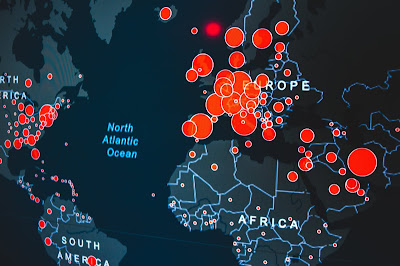Even though I struggle like never before to even read the bear minimum for keeping myself afloat in this immense pool of information that is Life Sciences, I don't wish to abandon this project altogether. It is important for my personal and professional education, and as long as there are others reaching out to me and reading my posts, I believe the knowledge I acquire and share can be, and is indeed, relevant for other intrepid scientific minds.
Hence, I accepted that the ritual of posting in this blog might be affected in periodicity, but cannot be disregarded at all. I will eventually complete the last post (immediately before this one) where I am still trying to find the time to adequately read through my friend's article (don't want to be lenient with that); but I also want to start posting a bit more on The Toxicologist Today. I then came up with the conclusion that short answers to immediate questions that suddenly populate my brain, due to professional requests or just personal doubts I eventually come across with, are the best way to keep in constant contact with you guys.
So, whenever a topic comes to my mind or emerges from a natural doubt I might have, I will share it with all of you for awareness, simply because it might be an interesting subject also playing in your mind! But don't worry, I'll make it short (way shorter than this post :D), clear and concise, and I'll make the referencing also short, straightforward, but robust (with significant reliable studies/institutions behind them).
Hope you like it. Shall we start? This one has been assaulting me for quite some time...
Why do pandemic viral infections come in waves?
Apparently pandemic viral infections comprise 6 phases of alertness, as per the World Health Organisation (WHO). And throughout the post-peak period, the strength of the pandemic disease will have been reduced in developed countries with appropriate health surveillance. It will do so until its infectivity proneness has dropped below the former peak registered levels [1]. This means that after the peak period one witnesses a decrease of pandemic activity but only until the virus regains a new viral infectivity/potency due to natural mutations that will bring infection to yet another peak level, until herd immunity starts appearing and a certain dormancy of infectivity is observed. The different peaks/waves can be distanced by many months and relaxation of control measures can be irresponsible, depending obviously on the strength and adequacy of the available scientific responses.
In a nutshell, the first wave results in deaths and disability linked to the viral infection itself; the second wave impacts on subjects who are volatile in the medium-term as a result of failures in the approach during the first wave; and the third wave reveals the consequences of the "virus on the social determinants of health and its effects on the next generation", as per Fisayo and Tsukagoshi (2020), [2].
[1] About Pandemic Phases, World Health Organisation, [https://www.euro.who.int/en/health-topics/communicable-diseases/influenza/data-and-statistics/pandemic-influenza/about-pandemic-phases], last access on the 02Jun2021, last update unknown
[2] Fisayo, T, Tsukagoshi, S. (2020). "Three waves of the COVID19 Pandemic". Postgrad Med J, 97, pp. 332.
Photo kindly provided by Erik Mclean on Unsplash


No comments:
Post a Comment